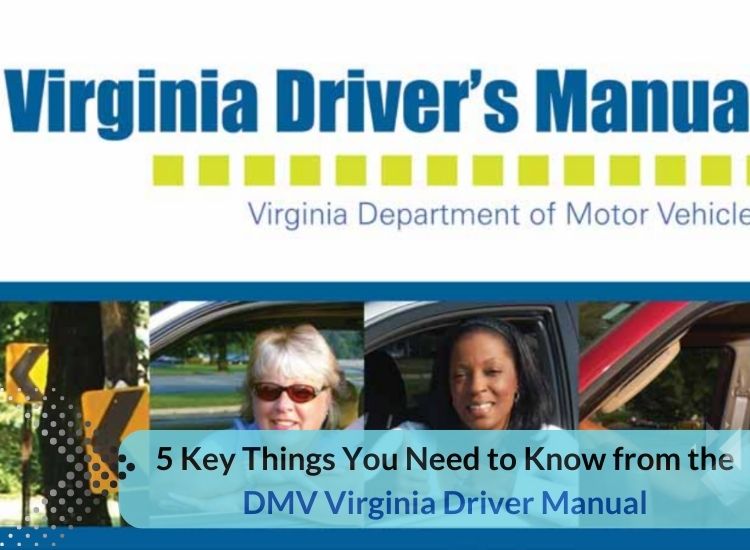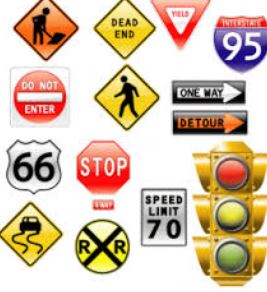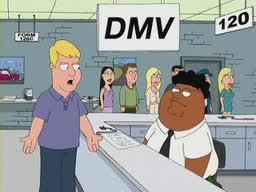5 Key Things You Need to Know from the DMV Virginia Driver Manual
Driving is a necessary part of life for millions of people across the United States. However, driving can be dangerous if you don’t know the rules of the road, and it’s important to be aware of the laws and regulations that govern driving in your state. In Virginia, the DMV Virginia Driver Manual is a comprehensive guide to driving in the state. In this article, we’ll explore 5 key things you need to know from the DMV Virginia Driver Manual to help you become a safer and more responsible driver.
Introduction to the Virginia Driver Manual
The Virginia Driver Manual is a guidebook published by the Virginia Department of Motor Vehicles (DMV) that provides information on driving laws and regulations in the state. The purpose of this manual is to provide drivers with a comprehensive understanding of road regulations, traffic signs and signals, and effective driving techniques to ensure safety on the roads. The Virginia Driver Manual is an essential resource for anyone learning to drive in the state, as well as for experienced drivers looking to refresh their knowledge.
Key thing #1: Virginia traffic laws and regulations
One of the most important things you need to know from the DMV Virginia Driver Manual is the state’s traffic laws and regulations. The manual provides detailed information on topics such as speed limits, right-of-way rules, and passing and turning maneuvers. It also explains the consequences of violating these laws, including fines, points on your driving record, and even suspension or revocation of your driver’s license.
It’s important to note that Virginia has some unique traffic laws that may differ from other states. For example, Virginia has a “move over” law that requires drivers to move to the left lane when passing an emergency vehicle or tow truck parked on the roadside. The Virginia Driver Manual provides detailed information on these laws, as well as tips for staying safe and avoiding traffic violations.
Key thing #2: Understanding road signs and signals
Another important aspect of driving in Virginia is understanding road signs and signals. The Virginia Driver Manual provides detailed information on the meaning of different traffic signs, as well as how to interpret traffic signals such as traffic lights and railroad crossings. It also explains the importance of paying attention to road conditions, such as construction zones, work zones, and school zones.
Understanding road signs and signals is essential for safe driving, as it helps drivers anticipate potential hazards and avoid accidents. It’s important to review this section of the Virginia Driver Manual carefully, as it will be covered extensively on the written driver’s license test.
Key thing #3: Driving under the influence and defensive driving
Driving under the influence (DUI) of alcohol or drugs is a serious offense in Virginia, and can result in fines, license suspension, or even jail time. The Virginia Driver Manual provides detailed information on the state’s DUI laws, as well as tips for avoiding drunk driving and staying safe on the road.
In addition to DUI, the Virginia Driver Manual also covers the importance of defensive driving. Defensive driving is a collection of skills and techniques specifically developed to assist drivers in preventing accidents and maintaining safety while driving on the road. It focuses on proactive measures to stay out of harm’s way and promotes a secure and cautious approach to driving. It includes things like maintaining a safe following distance, scanning the road ahead for potential hazards, and being aware of other drivers around you.
Key thing #4: Vehicle maintenance and safety
Keeping your vehicle in good condition is essential for safe driving. The Virginia Driver Manual provides information on basic vehicle maintenance tasks, such as checking your brakes, tires, and headlights, as well as more advanced topics such as changing a tire and checking your engine oil.
The manual also covers important safety features of your vehicle, such as airbags, seat belts, and child safety seats. Understanding how these features work and how to use them properly can help keep you and your passengers safe in the event of an accident.
Key thing #5: What to do in case of an accident or emergency
Finally, the Virginia Driver Manual provides information on what to do in case of an accident or emergency. This includes things like how to report an accident to the police, how to exchange information with the other driver, and how to file an insurance claim.
The manual also covers what to do in the event of a breakdown or other emergency, such as how to change a tire or jump-start your vehicle. Knowing how to handle these situations can help keep you safe and avoid further damage or injury.
Tips for passing the Virginia driver’s license test
Passing the Virginia driver’s license test is an important milestone for any driver. The Virginia Driver Manual provides tips and strategies for passing the written and driving portions of the test, as well as information on what to expect during the test.
Some tips for passing the Virginia driver’s license test include studying the Virginia Driver Manual thoroughly, practicing driving in a variety of conditions and situations, and taking a defensive driving course. It’s also important to arrive at the testing center early, bring all the required documentation, and remain calm and focused during the test.
Resources for studying the Virginia driver manual
In addition to the Virginia Driver Manual itself, there are many resources available for studying and preparing for the driver’s license test. These include online practice tests, study guides, and driving schools. It’s important to choose a reputable resource and to supplement your study with real-world driving experience.
Conclusion: Importance of following the Virginia driver manual guidelines
The DMV Virginia Driver Manual is a vital tool for individuals who are in the process of learning how to drive or seeking to brush up on their understanding of driving laws and regulations in the state. It serves as a valuable resource to enhance your knowledge and ensure compliance with the rules of the road in Virginia. By understanding the key things outlined in this article, you can become a safer and more responsible driver, and help keep yourself and others safe on the road. Remember to always follow the guidelines and rules outlined in the Virginia Driver Manual, and to drive defensively and responsibly at all times.
Frequently Asked Questions
What is the purpose of the DMV Virginia Driver Manual?
The DMV Virginia Driver Manual serves as a comprehensive guidebook published by the Virginia Department of Motor Vehicles. Its purpose is to provide drivers with essential knowledge about driving laws and regulations in the state. This manual acts as an authoritative resource for both new and experienced drivers, promoting safe and responsible driving practices.
Why is it important to understand Virginia’s traffic laws and regulations?
Understanding Virginia’s traffic laws and regulations is crucial for all drivers to ensure compliance and promote road safety. Familiarity with these laws helps drivers make informed decisions while driving, prevents accidents, and reduces the risk of penalties such as fines, license points, or license suspension.
What does defensive driving entail?
Defensive driving involves a set of skills and techniques aimed at preventing accidents and maintaining safety on the road. It emphasizes proactive measures such as maintaining a safe following distance, being alert to potential hazards, and anticipating the actions of other drivers. Defensive driving promotes a cautious and responsible approach to driving.
Why is it crucial to understand road signs and signals?
Understanding road signs and signals is essential for safe driving. These signs and signals communicate important information to drivers, such as speed limits, warnings, and directions. By comprehending and obeying these signs, drivers can anticipate potential hazards, navigate intersections, and make informed decisions, promoting overall road safety.
What are some consequences of driving under the influence in Virginia?
Driving under the influence (DUI) in Virginia can lead to severe consequences. Offenders may face fines, license suspension, mandatory education programs, ignition interlock device installation, and even imprisonment. These penalties aim to deter drunk driving and protect the safety of all road users.
Why is vehicle maintenance essential for safe driving?
Regular vehicle maintenance ensures that all components of the vehicle are in proper working condition, reducing the risk of accidents due to mechanical failures. Tasks such as checking brakes, tires, and lights contribute to optimal vehicle performance and enhance overall safety on the road.
What should you do in case of an accident or emergency on the road?
In the event of an accident or emergency, prioritize safety by moving to a safe location, if possible, and contacting emergency services. Exchange information with the involved parties and document the incident. It is important to report the accident to the police and contact your insurance company to initiate the claims process.







